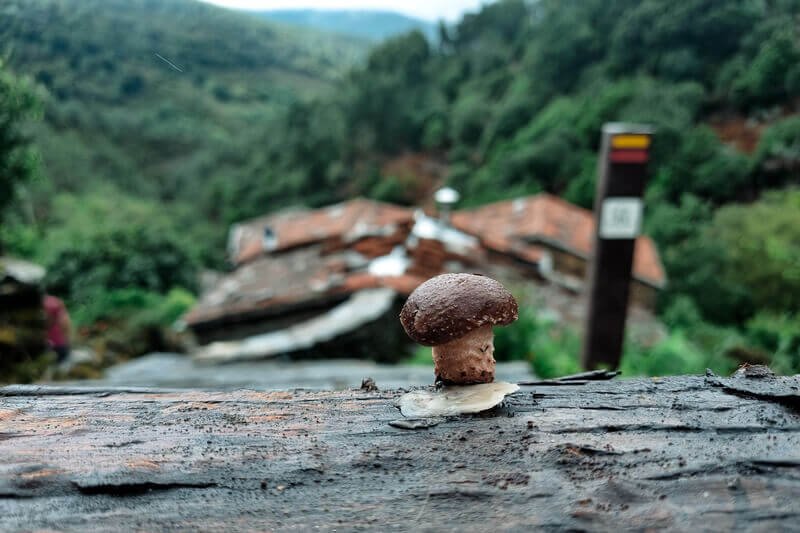How fungi can help save portuguese forests
Fungi often gets a bad rap in the natural world: they’re seen as a threat and responsible for numerous plant diseases.
But most of the fungi we find in the forest are very beneficial for the environment they’re in.
And they can change the future of portuguese forestry in a realistic way.
What's so wrong with forests in Portugal?
The main problem about portuguese forests is the uncontrolled planting of invasive species, such as eucalyptus and acacia. Portugal is the country in the world with the highest percentage of eucalyptus trees in its territory. Yes, we are the “world champions” of eucalyptus. But why is this statistic so frightening?
It should be noted that no tree, by itself, is harmful to a forest habitat. The problem lies in how it is planted and on what scale that happens.
In Portugal, the plantation of eucalyptus and other “exotic” species has been done in a disorderly way and with very little regulation. They are popular choices for planting because they’re fast-growing trees and, therefore, you can harvest its wood more quickly than other native species, such as pine or oak.
The unprecedent planting of these species has devastating consequences for our forest. They create “deserts” around them as they stop the growth of native tree roots and drastically reduce biodiversity. They’re “gasoline” for forest fires as they grow in a very dry environment.
But they bring economic value and that - in a twisted kind of way - seems to justify all the harm they bring.
So what can we do to solve the problem?
Bearing in mind that portuguese forests have one of the highest percentages of private lands in Europe (around 85%), it’s not enough to discourage or prohibit unsustainable practices.
We need this sector to remain attractive and, for that, it is necessary to present long-lasting, realistic and economically viable alternatives.
And this is where fungi can be the agents of change.
What’s so special about fungi?
The mushrooms that we see on the surface are just "the tip of the iceberg". Underneath our feet, they're connected to an incredibly complex network of fungi called mycelium. The mycelium network touches the tips of the roots of plants and trees and, from there, they exchange information, water and fundamental nutrients between themselves. For this very reason, some call them the "internet of nature"!
Mushrooms play a crucial role in the forest ecosystem: not only are they responsible for breaking down organic matter, they also facilitate water circulation, fight soil erosion, reduce the infiltration of toxic substances and are even capable of breaking down some pollutants.
Because they are able to regenerate and make our forests more resilient, they can be an essential part in fighting wildfires and the deforestation we’re experiencing today.
How can we use fungi in portuguese forests?
We know their value to ecosystems, but can we plant them? The answer is yes! One of the most common forms of planting is with tree logs, through a process called “mushroom inoculation”. Mushrooms are not only fundamental pieces in any forest system, but also add a high economic value to them.
Unlike other European and Eastern countries, mushrooms are not yet widely consumed in Portugal. But the demand has increased considerably every year (about 15% per year).
The “super-foods” trend and the search for foods with high nutritional value has brought awareness about mushrooms. They have very relevant nutritional properties, namely in the fight against neuro-degenerative diseases and in maintaining the proper functioning of the immune, intestinal and cardiovascular systems.
Planting mushrooms as a way of creating high economic value must go beyond the selling of regular fresh mushrooms that we see in the supermarket. There’s some highly valued species for their use in haute cuisine and medicinal properties such as truffles, reishi and shiitake. The mushrooms can be harvested and processed, creating a differentiating range of products, in the form of food supplements, extracts or dehydrated mushrooms.
Growing mushrooms for innovative uses in Portuguese forests can create a flow of wealth for rural regions. Through the training of local community members, it can lead to the creation of highly qualified jobs, replacing traditional jobs in the wood and forest biomass industry.
We are confident that, in the coming years, we will witness investment in the production of fungi and other innovative solutions that will motivate an urgent change in portuguese forestry. Mentalities are already beginning to change!
Since 2019, Cerdeira – Home for Creativity has been a partner of the LIFE MycoRestore project of the European Union. We are helping to protect Serra da Lousã by investing in mycological resources in the region.
Learn more about the work we are doing at:
mycorestore.eu/en/





